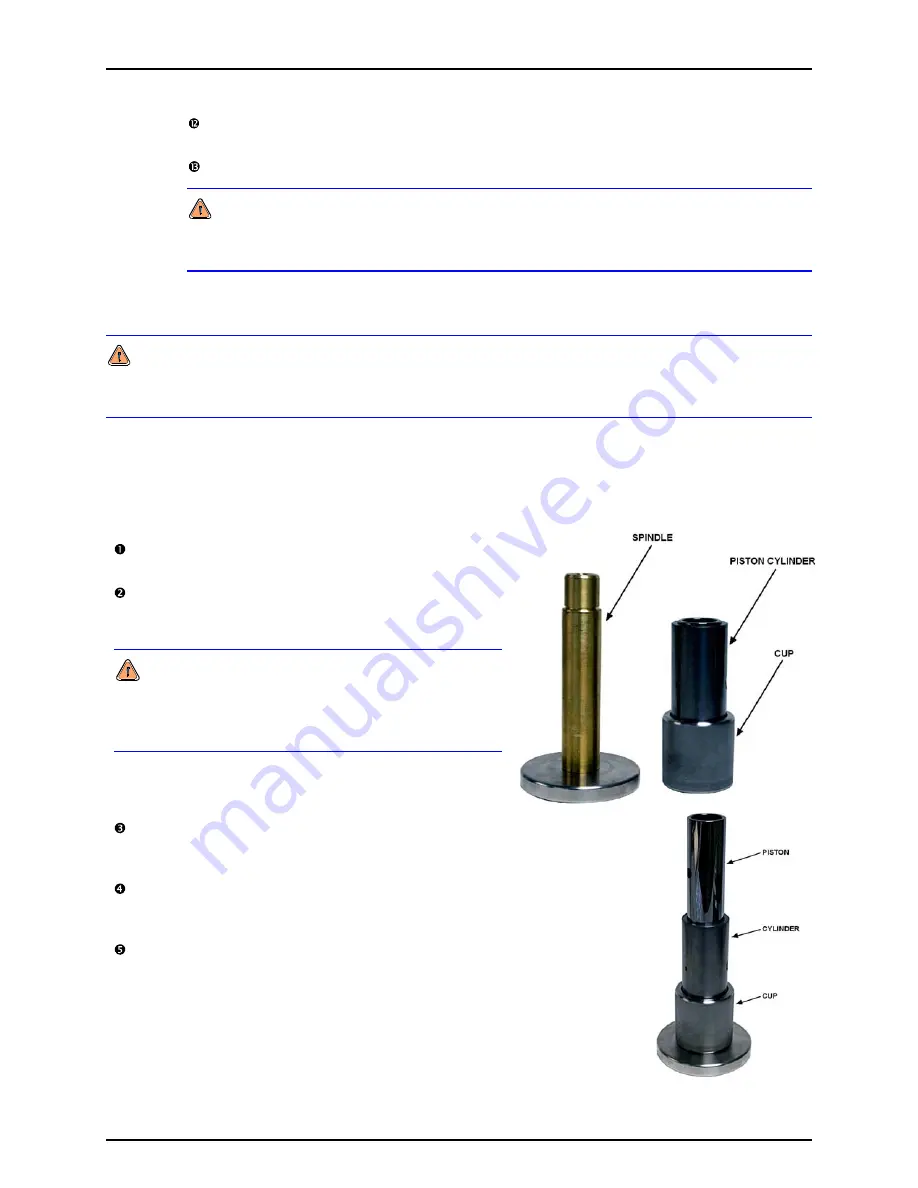
7. PISTON-CYLINDER MAINTENANCE
Page 111
© 2007 DH Instruments, a Fluke Company
Cup the piston-cylinder in your hand, remove the indexing pin (see Figure 61) and allow
the piston-cylinder to drop in a straight vertical descent.
Place the piston-cylinder on a flat surface on several lint-free towels.
When placing the piston-cylinder on the table, make sure to set it down in the vertical
position. If the piston-cylinder is set down in a horizontal position, there is a risk of the
assembly rolling off the table causing permanent damage.
7.3
REMOVING THE PISTON FROM THE CYLINDER
Never attempt to remove the piston from the cylinder without using the special piston insertion tool
and the procedure described in this section. Doing otherwise can result in the piston cocking as it
leaves the cylinder and damage to both parts.
As the piston and cylinder are very high precision parts with a gap as small as one micron, a special tool
and procedure is required to remove one from the other without risk of the piston cocking in the cylinder
and binding as it leaves the cylinder.
When removing the FPG piston from its cylinder, proceed as follows:
Remove the cup from the spindle of the FPG insertion
tool and place both on a flat, stable surface.
Lift the piston-cylinder by the outside of the cylinder
and the inside of the piston. Place the piston-cylinder
into the insertion tool.
NEVER touch the lapped surfaces (polished
appearance) of the piston or cylinder with your bare
hands. Body oils and acids can permanently etch
the surfaces.
Lift the cup and slowly slide it down onto the spindle. The
piston is stopped by the ledge at the top of the spindle
while the cylinder continues to move down with the cup.
Using gloves and minimizing contact with the outside
polished surface of the piston, remove the piston from the
FPG piston insertion tool.
Slide the cup containing the cylinder up and off the
spindle. Remove the cylinder from the cup.
















































